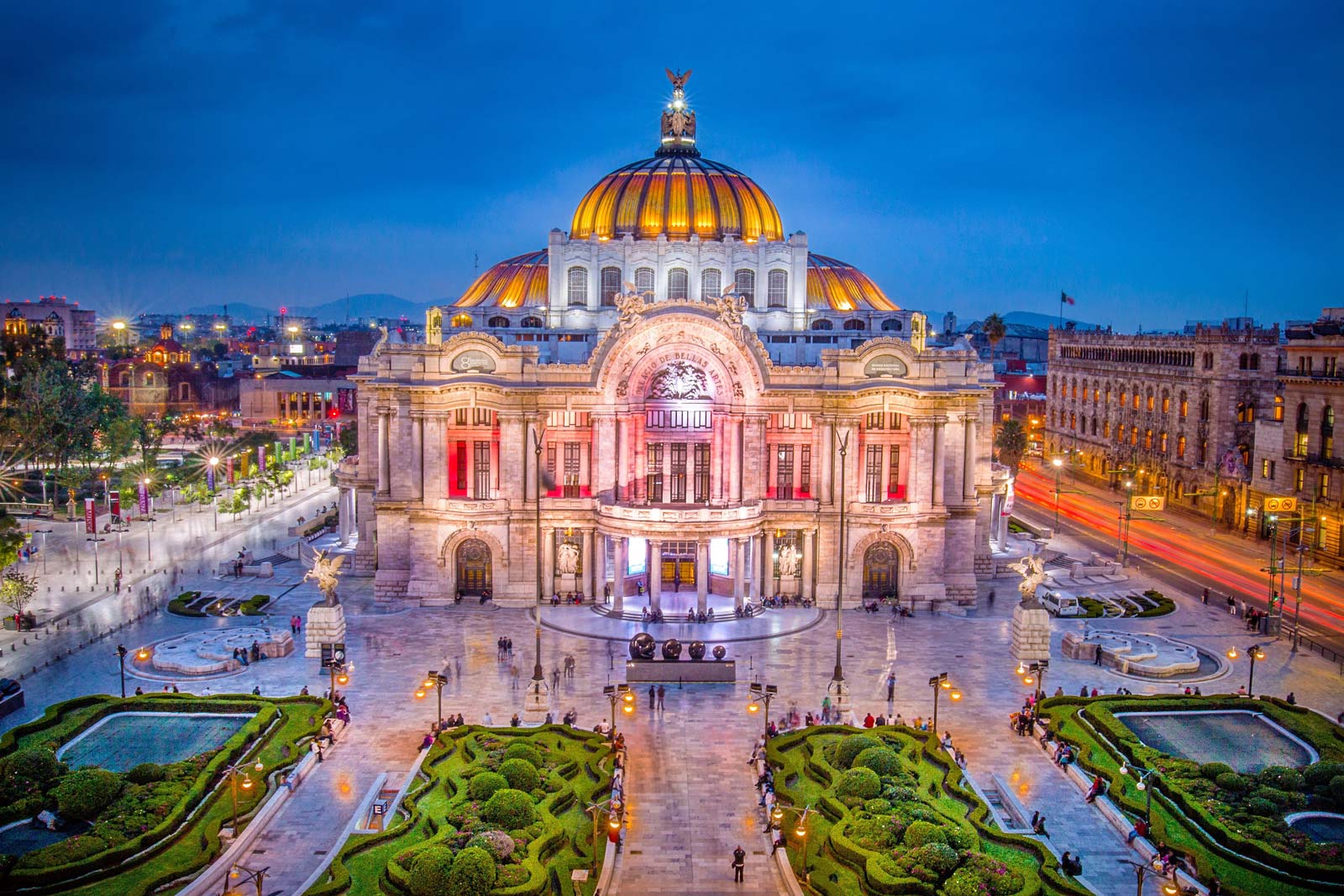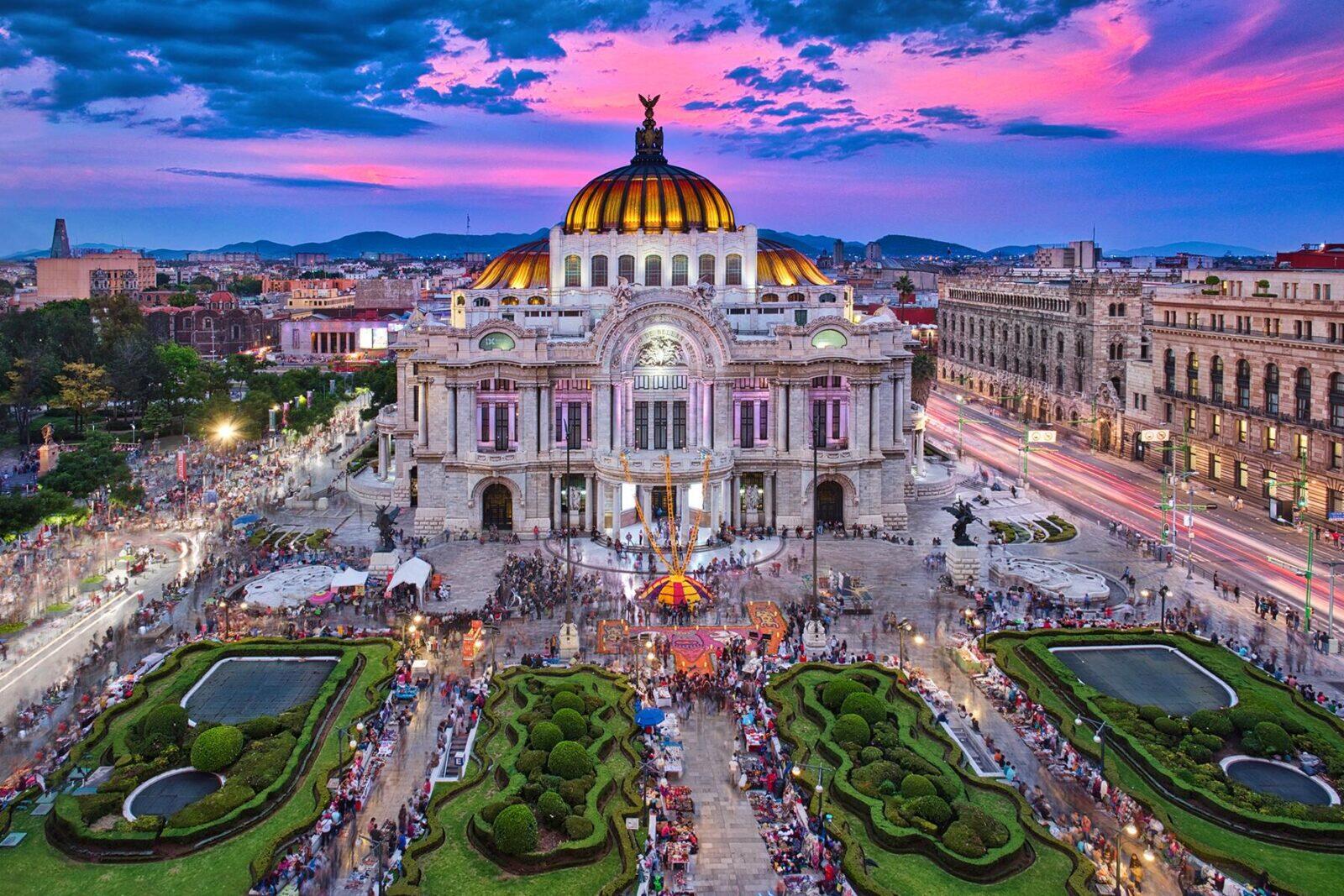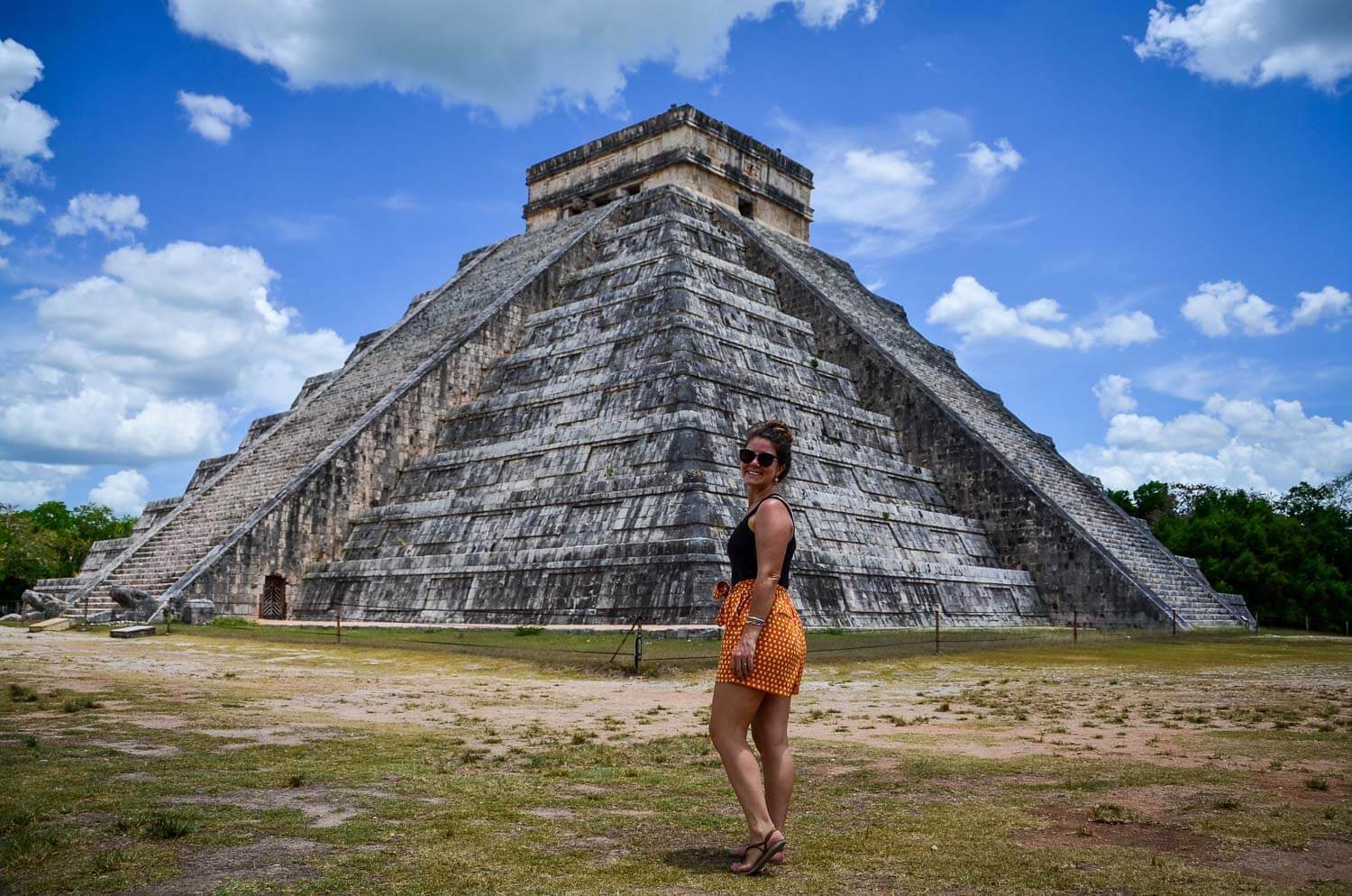
Mexico, a country brimming with vibrant colors, ancient mysteries, and a passionate spirit, beckons travelers with its unparalleled diversity. From the sun-drenched beaches of the Caribbean to the bustling metropolis of Mexico City, the awe-inspiring ruins of ancient civilizations to the charming cobblestone streets of colonial towns, Mexico offers an intoxicating blend of experiences that captivate the soul and ignite the senses. This comprehensive guide will take you on a journey through Mexico’s top attractions, delve into its rich history, provide essential travel tips, explore accommodation and transportation options, and pinpoint the best time to visit this mesmerizing land.
A Journey Through Time: Mexico’s Rich History
Mexico’s history is a complex and captivating tapestry woven from millennia of indigenous civilizations, centuries of Spanish colonial rule, and the struggles and triumphs of a modern nation. Understanding this past is key to appreciating the country’s present.

Related Articles about Mexico: A Land of Infinite Wonders – Your Ultimate Travel Guide:
- Maldives: An Azure Dream – Your Ultimate Travel Guide to Paradise
- Vancouver: A Jewel on the Pacific Rim – Your Ultimate Travel Guide
- Uzbekistan: A Silk Road Jewel – Your Comprehensive Travel Guide
- Nepal: A Journey to the Roof of the World and Beyond
- Slovenia: A Jewel Box of Emerald Dreams and Alpine Majesty
Pre-Columbian Grandeur: Before the arrival of Europeans, Mexico was home to some of the world’s most advanced civilizations. The Olmecs (c. 1500-400 BCE), often considered the "mother culture" of Mesoamerica, laid the groundwork for subsequent societies with their colossal stone heads and sophisticated religious practices. The Maya (c. 250-900 CE, with later periods) built magnificent cities like Chichen Itza, Palenque, and Uxmal, developing complex writing systems, advanced astronomy, and intricate calendars. Further north, the mysterious city of Teotihuacan (c. 100-600 CE) flourished, leaving behind the colossal Pyramids of the Sun and Moon. Finally, the Aztecs (c. 1300-1521 CE), a dominant force in the central highlands, built their capital, Tenochtitlan, on an island in Lake Texcoco, creating a vast empire renowned for its art, architecture, and fearsome warriors.
The Colonial Era and New Spain: In 1519, Hernán Cortés and his Spanish conquistadors arrived, dramatically altering the course of Mexican history. The fall of Tenochtitlan in 1521 marked the beginning of 300 years of Spanish rule, during which Mexico became the heart of "New Spain." This period saw the introduction of Catholicism, the Spanish language, new agricultural practices, and architectural styles that blended European and indigenous elements. Magnificent cathedrals, grand haciendas, and vibrant colonial cities like Puebla, Oaxaca, and San Miguel de Allende rose across the land, leaving an indelible mark on the country’s identity.
Independence and Modern Mexico: The desire for self-rule simmered for centuries, culminating in the Mexican War of Independence (1810-1821), led by figures like Miguel Hidalgo and José María Morelos. While independence brought freedom from Spain, the 19th and early 20th centuries were marked by political instability, foreign interventions, and the Mexican Revolution (1910-1920), a profound social upheaval that reshaped the nation. Today, Mexico is a vibrant democracy, grappling with the complexities of globalization while fiercely preserving its rich cultural heritage, a testament to its enduring spirit and resilience.
Top Attractions: A Kaleidoscope of Experiences
Mexico’s allure lies in its astonishing diversity, offering something for every type of traveler.
Ancient Wonders: Stepping Back in Time
- Chichen Itza, Yucatán: A UNESCO World Heritage site and one of the New Seven Wonders of the World, Chichen Itza is the quintessential Mayan ruin. The iconic El Castillo pyramid, the vast ball court, and the Temple of the Warriors stand as testaments to the advanced astronomical and architectural prowess of the Maya. Arrive early to beat the crowds and the heat.
- Teotihuacan, State of Mexico: Just an hour’s drive from Mexico City, Teotihuacan is a monumental archaeological site. Climb the Pyramid of the Sun and the Pyramid of the Moon for breathtaking views, and walk down the Avenue of the Dead, imagining the bustling ancient city that once thrived here.
- Palenque, Chiapas: Nestled deep within the lush Chiapas jungle, Palenque offers a more mystical experience. Its intricately carved temples, particularly the Temple of the Inscriptions, reveal the sophisticated artistry and spiritual beliefs of the Maya, often shrouded in a captivating mist.
- Tulum, Quintana Roo: Perched dramatically on a cliff overlooking the turquoise Caribbean Sea, Tulum offers the unique experience of Mayan ruins with a stunning beach backdrop. While smaller than other sites, its picturesque setting is truly unforgettable.

Colonial Charms: Architectural Beauty and Cultural Richness
- Mexico City: The bustling capital is a world unto itself. Explore the historic Zócalo, home to the Metropolitan Cathedral and the National Palace (with murals by Diego Rivera). Delve into pre-Hispanic history at the Templo Mayor, discover art and culture at the Palacio de Bellas Artes, wander through the colorful Frida Kahlo Museum (Casa Azul) in Coyoacán, and indulge in world-class cuisine.
- San Miguel de Allende, Guanajuato: Repeatedly voted one of the world’s best cities, San Miguel is a colonial masterpiece. Its cobblestone streets, vibrant Baroque architecture, and thriving arts scene create an enchanting atmosphere. Explore its art galleries, enjoy rooftop dining, and marvel at the iconic Parroquia de San Miguel Arcángel.
- Oaxaca City, Oaxaca: A UNESCO World Heritage site and a culinary hotspot, Oaxaca is renowned for its indigenous culture, traditional crafts, and exquisite gastronomy. Visit the magnificent Santo Domingo de Guzmán church, explore bustling markets like Benito Juárez, and take a day trip to the ancient Zapotec ruins of Monte Albán.
- Guanajuato City, Guanajuato: A vibrant, colorful city built into a narrow valley, Guanajuato is famous for its intricate network of underground tunnels, charming plazas, and the iconic "Callejón del Beso" (Kissing Alley). Its university town vibe adds to its lively atmosphere.
- Puebla, Puebla: Known for its Talavera pottery, exquisite mole poblano, and stunning Baroque architecture, Puebla offers a rich cultural experience. Explore its historic center, visit the impressive Cathedral, and admire the beautifully tiled buildings.
Natural Wonders and Adventure:
- The Riviera Maya, Quintana Roo: Stretching along the Caribbean coast, this region is a paradise of white-sand beaches, crystal-clear cenotes (natural swimming holes), and vibrant coral reefs. Popular spots include Cancun (resort hub), Playa del Carmen (lively town with nightlife), and Tulum (bohemian beach town).
- Copper Canyon (Barrancas del Cobre), Chihuahua: Larger and deeper than the Grand Canyon, Copper Canyon is a majestic series of canyons best explored via the "El Chepe" train. It offers incredible hiking, zip-lining, and a chance to experience the culture of the indigenous Tarahumara (Rarámuri) people.
- Cenotes of the Yucatán Peninsula: Thousands of these magical limestone sinkholes offer unique swimming, snorkeling, and diving opportunities in subterranean caves and open-air pools. Gran Cenote, Ik Kil, and Dos Ojos are among the most famous.
- Whale Watching in Baja California: From December to April, the Pacific waters off Baja California Sur become a breeding ground for gray whales, offering incredible opportunities for close encounters with these magnificent creatures, particularly in lagoons like San Ignacio and Ojo de Liebre.
- Monarch Butterfly Sanctuaries, Michoacán: From November to March, millions of monarch butterflies migrate from Canada and the US to the oyamel fir forests of Michoacán. Witnessing their mass congregation is an awe-inspiring natural spectacle.
Accommodation Options: From Budget to Boutique
Mexico offers a vast spectrum of accommodation to suit every budget and travel style.
- Hostels: Abundant in major cities and tourist hubs, hostels provide budget-friendly dorms and private rooms, often with social common areas, perfect for backpackers and solo travelers.
- Boutique Hotels: Especially prevalent in colonial cities like San Miguel de Allende, Oaxaca, and Mexico City, these charming hotels offer unique design, personalized service, and often occupy beautifully restored historic buildings.
- All-Inclusive Resorts: Dominant in beach destinations like Cancun, Playa del Carmen, and Los Cabos, these resorts offer a hassle-free experience with meals, drinks, and activities bundled into one price.
- Airbnb/Vacation Rentals: A popular option for families or those seeking a more local experience, offering apartments, houses, and rooms across the country.
- Luxury Hotels: From five-star international chains in major cities to opulent haciendas and exclusive boutique properties, Mexico provides world-class luxury experiences.
Navigating Mexico: Transportation
Getting to and around Mexico is relatively straightforward, with options ranging from budget-friendly to premium.
Getting There:
Mexico boasts numerous international airports. The busiest include:
- Mexico City (MEX): Benito Juárez International Airport, the largest in Latin America.
- Cancun (CUN): Gateway to the Riviera Maya.
- Guadalajara (GDL): Miguel Hidalgo y Costilla International Airport.
- Puerto Vallarta (PVR): Licenciado Gustavo Díaz Ordaz International Airport.
- Los Cabos (SJD): Los Cabos International Airport.
Getting Around:
- Buses: Mexico’s bus system is excellent, affordable, and extensive. Companies like ADO, Primera Plus, and ETN offer comfortable, air-conditioned buses with varying classes of service (from economy to luxury) connecting virtually every town and city. This is often the most recommended way for inter-city travel.
- Domestic Flights: For longer distances or time-sensitive journeys, domestic airlines like Aeromexico, Volaris, and VivaAerobus offer frequent and relatively inexpensive flights between major cities.
- Rental Cars: Available at airports and major cities. While a car offers flexibility, be aware of differing driving styles, speed bumps (topes), and the need for comprehensive insurance. Driving in large cities can be challenging.
- Taxis & Ride-Sharing: Taxis are readily available; always confirm the price before getting in or ensure the meter is used. Ride-sharing apps like Uber and Didi operate in many major cities and are generally safer and more convenient.
- Collectivos: Shared vans or minivans that run on fixed routes, a very economical way to travel short distances, especially in rural areas or between towns in tourist regions like the Yucatán.
Essential Travel Tips for a Smooth Journey
To ensure a safe and enjoyable trip, keep these tips in mind:
- Safety: While Mexico has faced safety concerns, most tourist areas are generally safe. Exercise common sense: be aware of your surroundings, avoid walking alone at night in unfamiliar areas, don’t flash valuables, and research specific areas if you plan to venture off the main tourist paths. Use reputable transportation.
- Money: The local currency is the Mexican Peso (MXN). ATMs are widely available, but inform your bank of your travel plans. Credit cards are accepted in most establishments, but always carry some cash for smaller vendors, tips, and emergencies. Tipping (propina) is customary for service staff (10-15% in restaurants).
- Language: While many people in tourist areas speak English, learning a few basic Spanish phrases (hello, thank you, please, excuse me, how much?) will greatly enhance your experience and is a sign of respect.
- Health: Drink only bottled or purified water. Be cautious with street food, especially raw vegetables or unpeeled fruit, unless you see it being freshly prepared. Pack sunscreen, a hat, and insect repellent. Consider travel insurance.
- Packing: Pack light, breathable clothing, comfortable walking shoes, and a swimsuit. A light jacket or sweater is useful for evenings, especially in higher altitudes. An adapter for electronics (Type A/B, 127V) might be needed.
- Culture & Etiquette: Mexicans are generally warm and hospitable. A respectful demeanor, politeness, and a willingness to engage will be appreciated. Ask permission before taking photos of people.
- Connectivity: Local SIM cards are affordable and widely available from providers like Telcel, providing excellent coverage. Wi-Fi is common in hotels and cafes.
When to Visit: The Best Time to Experience Mexico
Mexico’s vast size means its climate varies significantly by region, but generally, there are two main seasons:
- Dry Season (October/November to May): This is generally considered the best time to visit most of Mexico. Temperatures are pleasant, humidity is lower, and there’s very little rain.
- Peak Season (December to April): Coincides with cooler temperatures and major holidays (Christmas, New Year’s, Easter/Spring Break). Expect larger crowds and higher prices, especially in beach destinations and popular colonial towns.
- Wet Season (June to September/October): Characterized by higher humidity and afternoon showers. While it rains, downpours are often brief, leaving behind lush, green landscapes. This season can offer lower prices and fewer crowds.
- Hurricane Season (June to November): The Caribbean coast and Baja California are susceptible to hurricanes, with the highest risk in August and September. Travel insurance is highly recommended if visiting during this period.
Best Time by Activity:
- Beach Vacations: December to April (warm and dry).
- Exploring Ancient Ruins & Colonial Cities: October to May (pleasant temperatures for walking).
- Whale Watching (Baja California): December to April.
- Monarch Butterfly Migration (Michoacán): November to March.
- Festivals: Consider planning your trip around major cultural events like Día de Muertos (Day of the Dead) in late October/early November, which is particularly vibrant in Oaxaca and Michoacán, or Mexican Independence Day (September 15-16).
Conclusion
Mexico is a destination that truly has it all – a vibrant kaleidoscope of ancient history, breathtaking natural beauty, rich cultural traditions, and warm, welcoming people. Whether you dream of exploring ancient pyramids, lounging on pristine beaches, savoring world-renowned cuisine, or wandering through charming colonial towns, Mexico promises an unforgettable adventure. With careful planning and an open heart, you’re sure to fall in love with the magic, passion, and soul of this incredible country. ¡Buen viaje!





